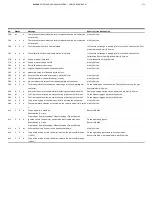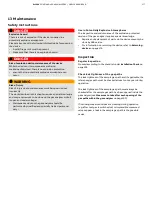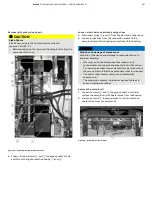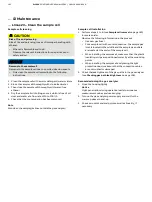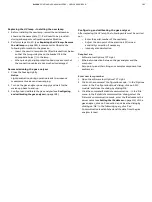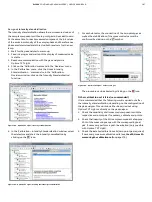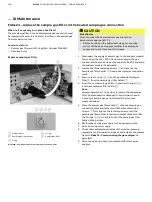
182
EL3000
CONTINUOUS GAS ANALYZERS | OI/EL3000-EN REV. D
… 13 Maintenance
… Limas23 – Clean the sample cell
Sample cell cleaning
CAUTION
Risk of fire and poisoning
Risk of fire and poisoning in case of improper handling with
ethanol.
• Ethanol is flammable and toxic!
Observe the relevant instructions for special risks and
safety advice!
NOTICE
Damage to the sample cell
Damage to the sample cell due to unsuited cleaning agents.
• Only clean the sample cell according to the following
instructions:
1. Clean the sample cell with a warm detergent/water mixture.
2. Rinse the sample cell thoroughly with de-ionized water.
3. Then rinse the sample cell thoroughly with water-free
ethanol.
4. Dry the sample cell with nitrogen or air which is free of oil,
dust and water at a flow rate of 30 to 100 l/h.
5. Check that the contamination has been removed.
Note
Also clean the sample gas lines outside the gas analyzer!
Sample cell installation
1. Perform steps 4 to 8. (see
on page 180)
in reverse order.
Observe the following information in the process:
• Use new gas lines!
• For a sample cell with center connection, the sample gas
inlet is located in the middle and the sample gas outlets
are located at the ends of the sample cell.
• When installing the sample cell, make sure that the plastic
insulating strips are positioned correctly at the mounting
points.
• When installing the sample cell and placing the light
protection hood, make sure that the connection cables
are not crushed or damaged.
2. Check the leak tightness of the gas paths in the gas analyzer
(see
Checking gas path leak tightness
on page 199).
Recommissioning the gas analyzer
1. Close the housing tightly.
Notice
Light penetration during operation leads to erroneous
measurement values and overranging.
2. Turn on the gas analyzer power supply and wait for the
warm-up phase to end.-up.
3. Check zero point and end points as well as linearity, if
necessary.




